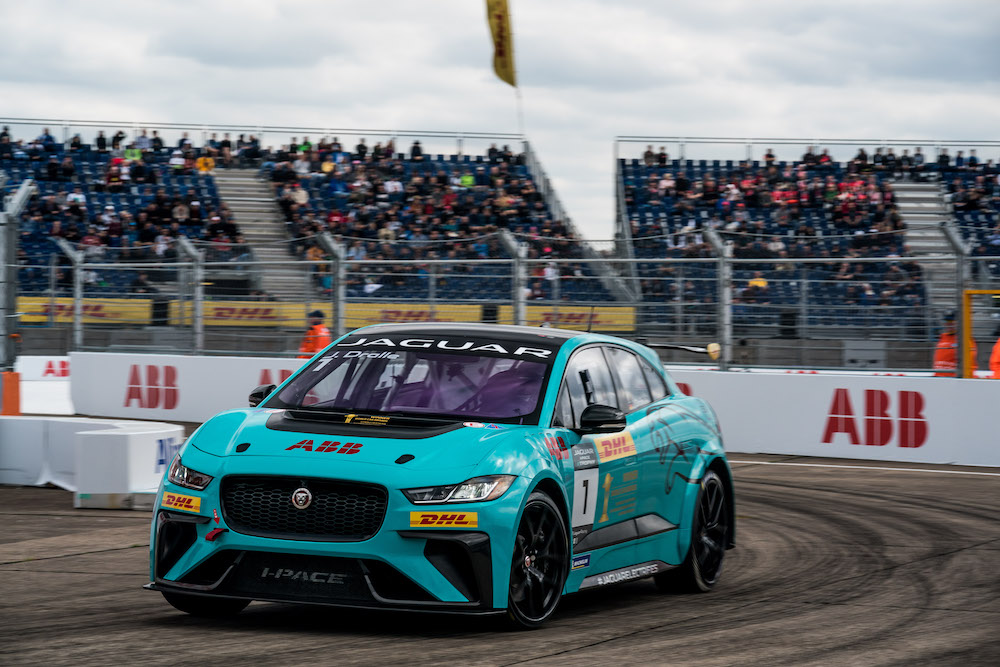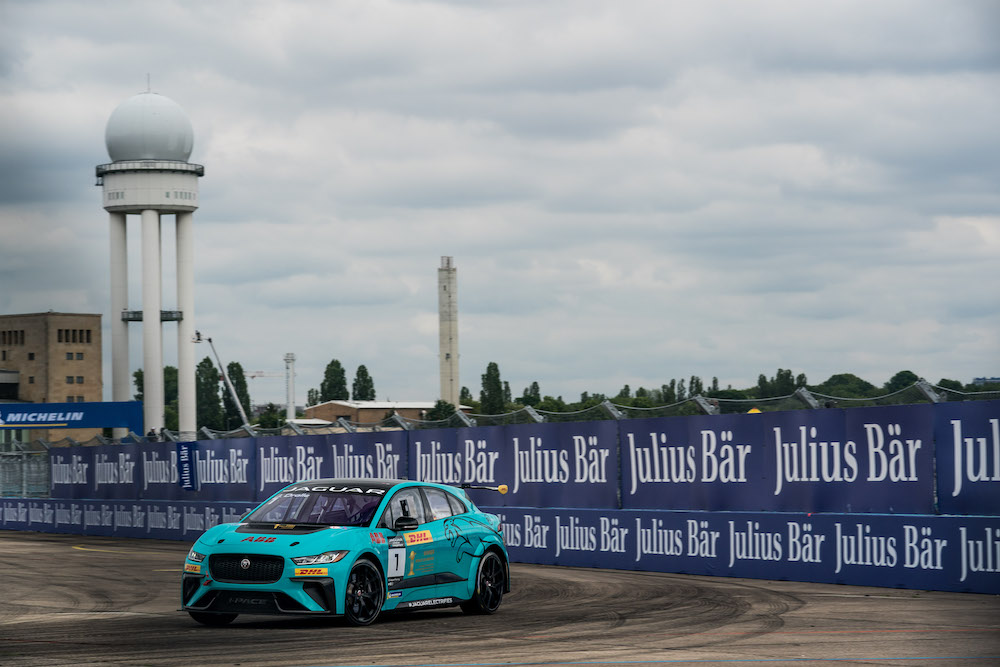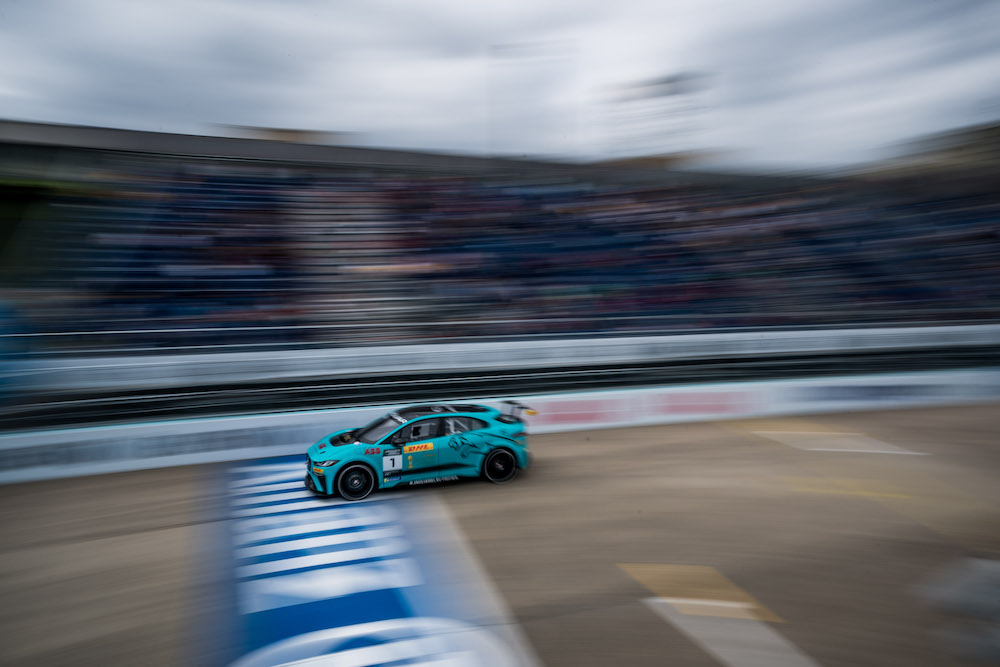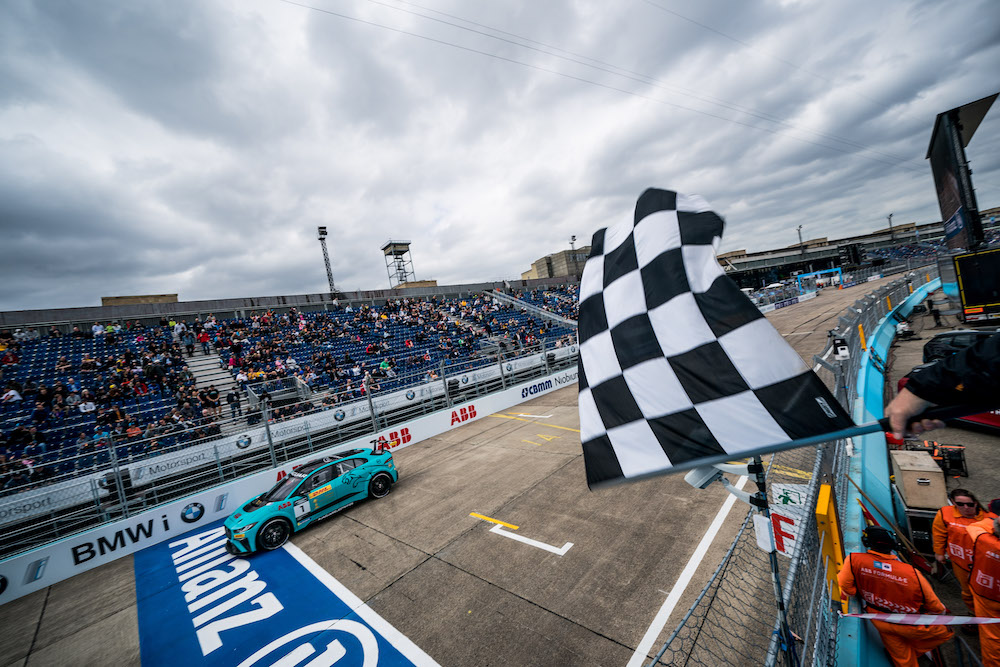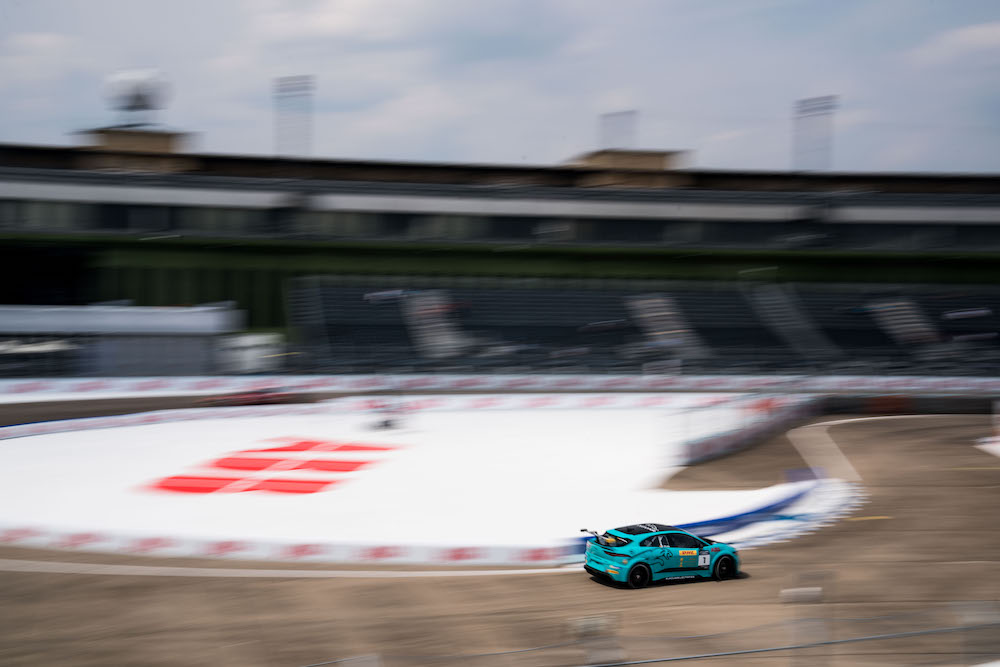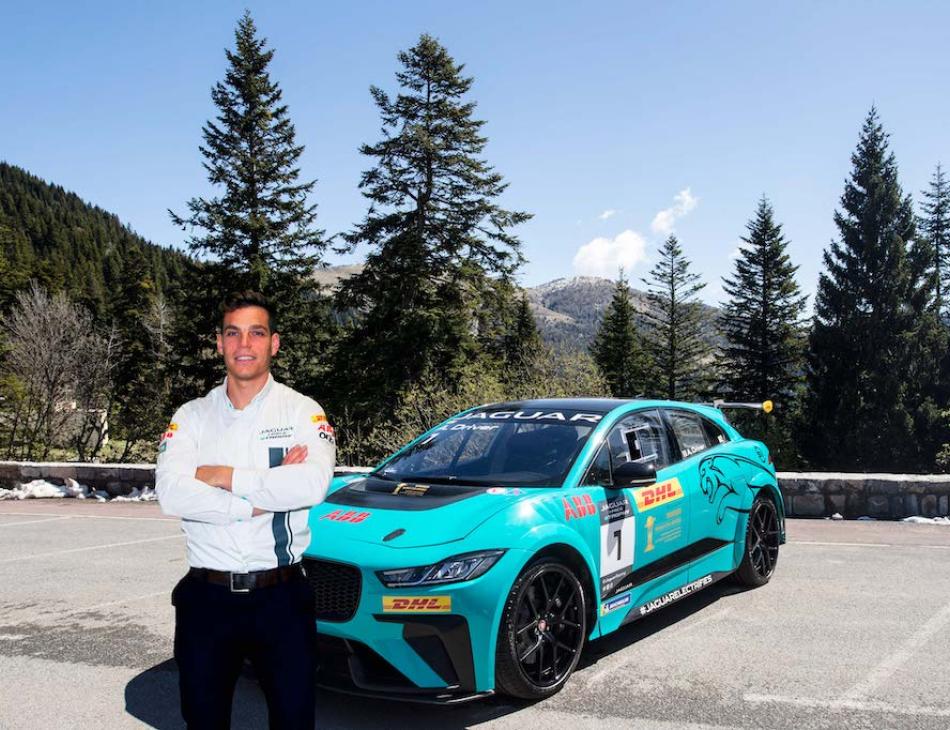Live Interview With Jack Lambert Lead Engineer On The Jaguar I-PACE eTrophy
International Excellence Magazine chatted with Jack Lambert, Vehicle Dynamics Engineer at Jaguar Land Rover Special Vehicle Operations, about the exciting developments of the Jaguar I-Pace eTrophy and what it took to turn the production I-PACE into a street circuit racing, electric demon for the Formula E Challenge. Jack was a pleasure to chat with, charming and a complete expert in his field, speaking passionately about all aspects of racing the Jaguar I-PACE. We’ll be following the Jaguar eTrophy with great interest.
This is a faithful rendition of our conversation.
Give us a brief rundown of what the Jaguar eTrophy Formula E Championship is about?
The championship is to created around the launch of the first batch of our electric vehicle, the new Jaguar I-PACE, and we got together as Jaguar SVO and Jaguar Racing around six months before the launch of the road car along with the success we were seeing in Formula E. We sat down and examined if we could turn the production I-PACE into a viable and credible race car. A massive challenge and undertaking that we really relished. Hoping to turn what we know is a very good on road electric vehicle into a really good on track electric vehicle.
That is how the championship started. It was proposed to Formula E, which is so well known now, that we could be a Sports series and slot into the Formula E race, with two challenges over the weekend. Jaguar jumped at the opportunity.
So what is your role with Jaguar?
I am the lead development engineer for Jaguar I-PACE eTrophy and work within Special Vehicle Operations at Jaguar and responsible for the development and build of every Jaguar I-PACE you see racing at the weekend.
How did you start out at Jaguar?
My background is in vehicle dynamics, as within SVO we are very performance focused. My speciality is in special suspension tuning. I started with a small team on project 8, the F Type SVR and the Range Rover Sport SVO, which is one of ours. I worked with a colleague of mine, well known in the rally and racing world, and he was the lead at the time when I joined for the chassis development, so we kind of ran with it as a project from about 18 months ago, then tuning and ongoing development fell down to me.
How did you develop your engineering skills?
I started out as an apprentice mechanic to a race team when I was about 14-15 years old. Just at weekends, which I loved doing. My family background has always been in cars and mechanics, then I went to University to do a Masters in Mechanical Engineering, (Editors note: He got a first,) that and my experience at JLR lead me to this point in eTrophy Racing.
Tell us a little bit more about the rest of your team.
Stuart Adler is the senior manager, with many different people from different backgrounds. There are powertrain specialists to get most out of the battery and motors. The chassis dynamics team, which is where I came in, to push the road car suspension architecture to make it more race focused and capable on the circuit. Including the pure electronic systems, control systems and cooling from the road car team. So the core team is about five people, but we could not have done it without the support and assistance from the wider team at Jaguar.
So it’s pretty exciting to be at the forefront of new technology?
It's been a massive opportunity and it's something that I never really anticipated would fall in my lap, I think the rest of the team feel the same, being able to pioneer the Jaguar I-PACE series has been phenomenal and we've overcome everything and ended up with something we're all incredibly proud of.
So what's the performance of the eTrophy I-PACE compared to the regular I-PACE?
The battery, the maintenance and the voltage architecture are all exactly the same as the road car. In terms of useable power it produces exactly the same, 4.5 seconds 0- 60 mph, so we carry over that powertrain. What we do is we change the way the powertrain thinks to make the car more dynamic and more capable on the circuit. We're able to move the torque so we can decrease the amount of torque that is sent forward and increase the force that is sent rearwards so its less of a 50/50 pure four wheel drive. Having broke our architecture that helps us to get through corners quickly and get it out quickly. The real performance jump is in the chassis tuning where we get the most out of the grip that is available within the tyre. The car weighed near enough two tons, so that’s 2000 kilos of mass that we're trying to manage. We worked with Ohlins and Eibach to develop a really strong suspension package that can make the most of the contact patch.
Then we developed the chassis system itself to have non-compliant ball joints and super steer set up so we could set a geometry and contact patch target and meet them. The car is considerably faster through corners and more capable in transition. These are street corner circuits, so fast changes in direction, plus stop start corners, so the car is able to cope with all of that and perform really well.
Was the weight something that couldn't be changed because of the battery packs?
The car was still around about 350 kilos lighter than the road going car. The majority of that comes from the interior contents that we removed, such as the heating. The battery itself is exactly the same but it actually helps us because it's so low in the car which allows us to bring the centre of gravity down even further. This makes the car more focused and agile when you drive it. It took me a long time to get used to it, a two ton car that moves like a fourteen hundred kilo race car. It really is way more agile than you would anticipate and that's been the feedback we've had from the drivers as well.
What other changes were made to the suspension system and architecture?
So the suspension architecture itself in terms of the subframe and the links are all exactly the same as on the road car, except for the way the rear axle is designed. As we fill the car with a super stiff roll cage, we’re able to change how we mount the rear adaptor. The road car has a separate spring and dampener configuration focused for ride, comfort and on road quality. We get rid of that and just mount the dampener directly to the roll cage leg. Making it more efficient and the rear axle more tuneable, so it’s more agile for its weight.
On the front axle we carry over the same steering system as on the I-PACE. But we get rid of any compliant pushes, every single push on the car has been removed and replaced with a really stiff cross axis joint. We've also upgraded the hubs. It's one of the product ranges within Jaguar Land Rover which is more capable of holding the forces that we'll see on the circuit. So it's a system that has been tuned but not completely redesigned.
How does electric racing differ from combustion petrol racing?
Really different in the way that everything has to be managed. Obviously the cars can only hold a certain amount of charge. And we are not able to recharge them during a race so it’s all about energy management. The car will be on the circuit and we're trying to do everything we can to keep going. The point for us was to get every car to finish the race so drivers have to manage energy for the first season. In terms of a race we can format, we have to really consider the amount of time it takes the vehicle to charge currently. So a Formula E weekend is very compact, so for us to get four sessions we have to make sure that everything runs to the minute to get those cars out every time at 100%.
It's really a different way of thinking about structuring a race weekend and the drivers have to consider the way they drive and manage their energy which they would never have to do with a combustion engine.
So what's the distance of each race?
Each race is 25 minutes plus one lap with a similar format to Formula E. There is a defining time plus one lap to make sure that the leader crosses the line and all the rest of the cars finish. The reason we go to 25 minutes is because that is where we're at with the current battery pack for a road going car and we are absolutely pushing to its limits.
What about the shape and the aerodynamics of the car?
It is an interesting one actually. When we look at the street circuits that vary every weekend, we’re not seeing normal track characteristic with a series of corners, a big long straight and that repeated. What we're seeing is the variance in the way that the car has to behave. The focus for the aerodynamics is on cooling and making sure that we can get enough airflow around the key components. That being the cooling circuits, the battery, the cooling circuit for the motors, and the brakes.
Downforce and aerodynamics wise it really depends on how much top speed we reach. Certain circuits we'll be up to only 90 miles an hour because of the short distance of the straights. Others we are up at nearly 120 or 130 mph in the straight so we have a tuneable rear wing, which the drivers can change, with five positions that they can do whatever they want with.
How many races and cities will the Jaguar eTrophy cover?
This season covered ten races across nine cities. We were just in Berlin last weekend. And then in six weeks time we'll be off to New York. It's an interesting one being the closing race of the season and a doubleheader. So we have the practice sessions on Friday, then the qualifying race nine on Saturday plus we'll do a qualifying race on Sunday, which would be race ten.
Engineering wise it’s a big undertaking for us because we have to make sure that every car on the circuit Saturday is re-prepped and any damage repaired overnight, ready to race again on Sunday. A big challenge but it’s going to be an awesome weekend.
Wish I was there, where in New York does the race take place?
On the docks in Brooklyn.
So what are the challenges of these street circuits?
Each circuit is so unique in each city, we see such a variation in the structures and the way the streets are laid out. The other big challenge is that the streets are not lined with nice run off, but with three foot high lumps of concrete. We have to make sure the car is robust iso if it does have a minor contact, we're not suffering major damage or rework.
We have to make sure the car is capable in every condition because the streets are not paved with nice smooth tarmac. We see changes so regularly. I think the best example of that was Hong Kong. Within one corner the surface changed nearly four times, like painted lines, concrete for tarmac, cracked surfaces, drain covers, everything. So we tune the suspension and grip design to make the most of the tyres. Development work was needed to see what surfaces and types of corners we were going to experience.
Quite a challenge for the drivers as well, getting to know the course?
Exactly right. The drivers don’t have much sight of the circuits because in this season we find a number of tracks that have never been used before and they are so changeable. You might get a circuit one year, come back next year and it's been completely resurfaced. So the set ups and the way you drive the circuit is going to change. It’s an extra dimension for the drivers but it's great for us because it adds an extra dimension to the competition.
Who are the drivers in these races?
We have two categories, professional and amateur. The professional championship is very tight at the top. We've got three drivers fighting for the championship which will come down to the last race in New York. It's been really competitive from the get go. The first five races we had five different winners. The pro-am category has been dominated so far by Bandar Alesayi, he’s had some really great results over the last three races. We’re also starting to see the rest of the Pro-Ams take chunks out of his current lead and Yaqi Zhang has won two races. He's been really on form the last two, certainly in Berlin, his battle with Célia Martin was probably the highlight of the weekend.
Because of the two different levels of competition on the circuit at one time it’s really interesting. Especially in qualifying because some of the Pro-Ams are starting ahead of the Pros. When we start with Pro drivers at the back of the field, having to fight their way through to their category, which often doesn’t pan out too well, the competition is more and more exciting every weekend. I’m looking forward to New York
What kind of overall budget do racing teams need for a season?
The entry fee would be £450,000 plus VAT.
What do you hope for the future for the eTrophy?
For the next three seasons I hope that we can continue to push the technology of the car and feed it back into the world of Jaguar. This year has been about understanding the car, how we get the most out of it and keep it consistent throughout the season. We are at a point now where we've got a car that is consistent and reliable every weekend. I'm hoping that moving into the last race of the season and season two, we can start bringing in more new technologies. This will help us to develop and understand them before they start feedback into the road car.
It's like closing the loop for us, we’ve taken an incredibly capable road car and turned it into the first ever production electric racing car. Using the race series feedback to not only improve and expand technology in the road world but also in the race world.
Have there been any issues with getting the car going after a race or has it all gone quite smoothly?
It's all gone fairly smoothly. During development we've seen a lot of issues that we haven’t been able to anticipate and engineer out before the race started. As with anything really, you put it into a new environment, you get new issues. The development work was done on a circuit in Spain called Calafat which is very akin to street circuits. It doesn't have some of the unique quality issues that you see around the world. So there have been a number of issues and surprises that we've had in the car but nothing that stopped the race weekend. We've been able to engineer these out within the gap between the two races.
Lastly what three to four classic cars would you have in your dream garage?
That’s a big question. The first would be the Mark 2 Escort RS Cosworth, always had a massive soft spot for Escorts, that would be number one. The Porsche 959, it’s a stunning looking car. A Lancia Delta Integrale and then a Ferrari F40, one of the cars I had on my wall as a kid. It’s also one of the cars we had in my race team when I was younger.
Follow the races here:https://www.fiaformulae.com/en/championship/jaguar-e-trophy
You can see our review of the joyful Jaguar I-PACE SE all electric car on the chapter link below.


